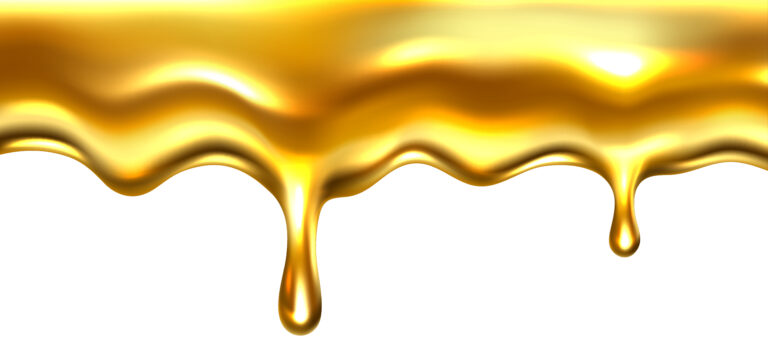
Colorful solution in conical flask lined on a bench in a chemistry lab with blur background organic chemistry experiment photography for background use
Recovering Gold with Sodium Nitrate
The intricate process of recovering gold using sodium nitrate (NaNO₃), a method particularly relevant in refining gold from various sources like electronic scrap, jewelry remnants and even certain geological samples.
We delve into the chemical reactions involved, safety precautions, crucial factors influencing efficiency, and the environmental considerations associated with this technique. This guide aims to provide a clear, detailed understanding of the process, enabling both professionals and enthusiasts to approach gold recovery with sodium nitrate effectively and responsibly. Safety is paramount throughout this process, and we emphasize careful adherence to best practices to minimize risks. We also examine various optimization strategies for maximizing gold yield and minimizing waste.
Gold recovery is a multifaceted field with applications ranging from industrial recycling to artisanal mining. While numerous methods exist, employing sodium nitrate offers a relatively accessible and effective approach, particularly for those dealing with gold-bearing materials containing other easily soluble metals. This method leverages the potent oxidizing power of sodium nitrate to scrap the gold and dissolve gold in the presence of hydrochloric acid, thereby separating it from other components.
Understanding the intricacies of this process, from preparation to final purification, is critical for safe and successful gold recovery.
Pros – Cons
- Q: Is sodium nitrate dangerous? A: Yes, sodium nitrate is an oxidizer and can be dangerous if mishandled. Always wear appropriate personal protective equipment (PPE), including gloves, eye protection, and a respirator. Work in a well-ventilated area and avoid contact with skin or eyes.
- Q: What type of equipment is needed for gold recovery using sodium nitrate? A: You’ll need heat-resistant glassware (such as beakers and flasks), a hot plate or Bunsen burner for heating, filtration equipment (filter paper and a funnel), and potentially some basic laboratory safety equipment like a fume hood and safety goggles. The specifics depend on the scale of your operation.
- Q: What time it should takes? A: The time depends on the concentration of the primary chemicals, but generally in 15 minutes it starts bubbling and in an hour all the material is destroyed, but the concentration and quality of the chemical, if it is a substitute like this case (NaNo3), could change the time by a big difference, like days.
- Q: Can I recover gold from all materials using this method? A: No. The success of this method depends heavily on the composition of the material you are processing. Some materials may require pre-treatment, while others may be unsuitable for this technique altogether. The presence of certain interfering elements can significantly reduce recovery efficiency.
The Chemical Reactions Involved
Gold’s inherent inertness requires a strong oxidant and an acidic environment to facilitate its dissolution. Sodium nitrate, in the presence of a strong acid like hydrochloric acid (HCl), acts as an oxidizing agent, converting gold to its soluble ionic form (Au³⁺). This reaction typically occurs at elevated temperatures. The specific chemical reaction is complex but the overall outcome is the dissolution of gold into the solution.
- Key Considerations:
- Temperature: Higher temperatures accelerate the reaction rate.( ‘it raise by itmself’! be aware of temperature, is more like a reaction that get hot so adding temperature it make it some how more dificult, but yes it accelerates the process and kind go more deep faster but every thing ends up disolved any way).
- Quantity of metal to scrap.
- Acid Concentration: Optimal acid concentration is crucial for efficient dissolution. Too little acid, and the reaction is slow. Too much, and it can lead to other issues.
- Nitrate Concentration: Sufficient nitrate is essential as the oxidizing agent.
- Reaction Time: Sufficient time is needed for the gold to completely dissolve.
- Safety Precautions: Always handle acids carefully. Wear appropriate protective gear.
- Waste Disposal: Proper disposal of chemical waste is crucial and should be done in accordance with local regulations.
Material Preparation and Pre-Treatment
Before initiating the gold recovery process, meticulous preparation of the gold-bearing material is paramount. This step involves several critical sub-processes aimed at maximizing gold extraction and minimizing interference from other elements. Effective pre-treatment significantly influences the overall efficiency and success of the recovery process.
- Key Steps:
- Crushing and Grinding: Reducing the material’s particle size increases the surface area available for reaction, improving gold dissolution.
- Sizing and Sorting: Separating different sized particles enhances the efficiency of the chemical reaction.
- Washing (Pre-leach): Removal of surface contaminants can prevent interference during the main process.
- Drying: Removing moisture ensures consistent reaction conditions.
- Sample Analysis: Determining gold content prior to processing assists in optimizing the process parameters.
- Metal Separation: If possible separate gold-rich sections from other less valuable materials.
The Dissolution Process
This stage involves the actual dissolution of gold using the sodium nitrate-acid mixture. Careful control of temperature, reaction time, and the concentration of reactants is crucial. The objective is to dissolve gold effectively while minimizing the dissolution of other metals. This process requires precise execution and a sound understanding of chemical principles.
- Important Details:
- Controlled Heating: Gentle heating prevents the solution from boiling over, while ensuring the reaction takes place at an optimal speed.
- Agitation: Regular stirring promotes even mixing and contact between the reactants.
- Monitoring: Observing the solution’s color change can provide some indication of the progress of the reaction.
- Safety: Always work in a well-ventilated area and use appropriate safety equipment.
- Acid Addition: Adding acid gradually can help control the reaction and minimize potential hazards.
- Temperature Control: Maintain consistent temperature throughout the process.
Gold Recovery and Purification
Once the gold is dissolved, it needs to be separated from the solution and purified. This typically involves a multi-step process, often beginning with filtration to remove any undissolved solids. Subsequent purification steps are crucial to obtain high-purity gold.
- Critical Steps:
- Filtration: Removing solid residues from the gold solution.
- Reduction: Converting dissolved gold ions back into solid gold. This can be done using various reducing agents.
- Washing: Removing residual chemicals from the recovered gold.
- Drying: Removing excess water to obtain pure gold.
- Refining: Further purification steps may be needed to reach the desired purity level.
- Assaying: Testing the purity of the recovered gold.
Recovering gold using sodium nitrate presents a viable method for extracting gold from various sources. However, success hinges on a thorough understanding of the chemical principles involved, meticulous attention to safety protocols, and precise execution of each step. Proper material preparation, controlled dissolution, and effective purification are all critical to maximizing gold yield and minimizing waste. This method, while offering potential benefits, requires a cautious and informed approach, emphasizing safety and responsible disposal of chemical waste. Always prioritize safety and conduct thorough research before undertaking this process. Remember that variations in the process may be required depending on the specific composition of your gold-bearing material. Consulting relevant literature and seeking expert advice when necessary are crucial for optimal results and safe operation.





